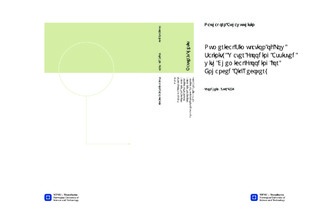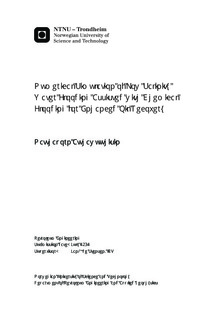| dc.description.abstract | World proved oil reserve gradually decreases due to the increase production but decrease new field discovery. The focus on enhance oil recovery from the existing fields has become more interesting in the recent years. Since waterflooding has been used in practices in secondary recovery phase for long time ago, the low salinity waterflooding is possible to apply as tertiary recovery phase. Another effective enhance oil recovery method is chemical flooding especially, nowadays, when the price of chemical is not a big issue compared to oil price. Both low salinity and chemical flooding method have been trialed and success in laboratory studies and some field tests. Moreover the salinity sensitivity on chemical flooding has been studied and both positive and negative results were proposed. Because new technology has been developing day by day in order to get higher oil recovery, the new technology as the combination of low salinity waterflooding and chemical flooding has been studied in this report. In this thesis, the literature of low salinity water flooding, alkaline flooding, surfactant flooding, polymer flooding and alkaline-surfactant-polymer flooding (ASP) have been reviewed. The mechanisms of each method that affect to oil recovery and salinity sensitivity on each chemical flooding method have been summarized. All of those studies showed the benefit of chemical to the low salinity water flooding. the result of literature reviews has turned to the numerical simulation part.The simulation has been carried out on a 3 dimensional synthetic model by using Eclipse 100 as the simulator. The model is heterogeneous with patterns variation in permeability and porosity. The effect of low salinity in water flooding, alkaline flooding, surfactant flooding, polymer flooding and ASP flooding have been observed in many aspects.The main role of low salinity effect in water flooding is wettability changing from oil-wet to water-wet. The low salinity water in the first water flooding phase give the positive effect but not much different compared to overall recovery. The low salinity in chemical solution influences an additional oil recovery in all combinations. Mainly, low salinity increases polymer solution viscosity that can improve sweep efficiency of polymer flooding. In alkaline flooding and surfactant flooding, the salinity is need to be optimized to optimum salinity condition corresponding to optimum alkaline concentration and surfactant concentration, where creates the lowest IFT. The range of secondary flooding for alkaline and surfactant flooding is when they reach the optimum concentration. In case of polymer, the viscous polymer solution can impact longer as the polymer injection range. In term of low salinity in tertiary water flooding, it influences better oil recovery than high salinity water flooding. Therefore, it can be concluded that low salinity water flooding gives a positive effect to overall result when combined with chemical flooding. The recommendations are also available for further study. | nb_NO |

